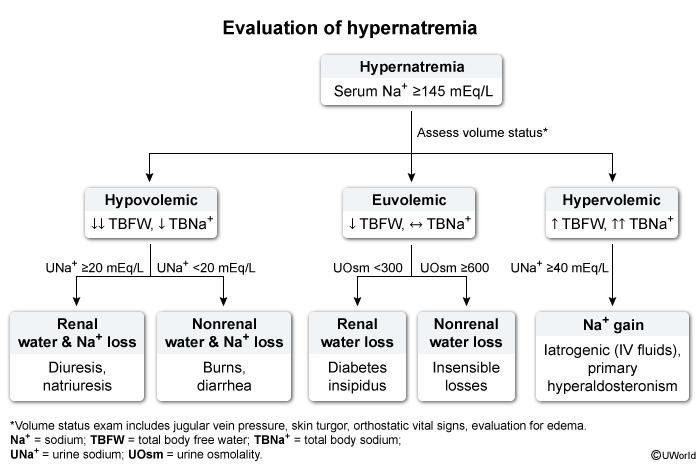Hypernatremia
Article Sections
Introduction
Hypernatremia is an electrolyte disorder characterized by a serum sodium (Na+) concentration >145 mEq/L due to loss of water (ie, dehydration) or gain of sodium. Although the absolute amount of sodium in the body may be normal, low, or high, hypernatremia always indicates a relative deficit of total body free water (TBFW) relative to total body sodium (TBNa+). This is in contrast to hyponatremia (discussed in a separate article), where there is an excess of TBFW relative to TBNa⁺.
Pathophysiology
Na+ is the primary extracellular cation and plays a critical role in maintaining extracellular fluid volume and osmolality. The body tightly regulates serum Na+ concentration through mechanisms involving the following organs:
HypothalamusThe hypothalamus contains osmoreceptors that, when stimulated by increased serum osmolality, trigger thirst. This prompts increased fluid intake to help maintain proper sodium concentration.
Continue Learning with UWorld
Get the full Hypernatremia article plus rich visuals, real-world cases, and in-depth insights from medical experts, all available through the UWorld Medical Library.
Figures
